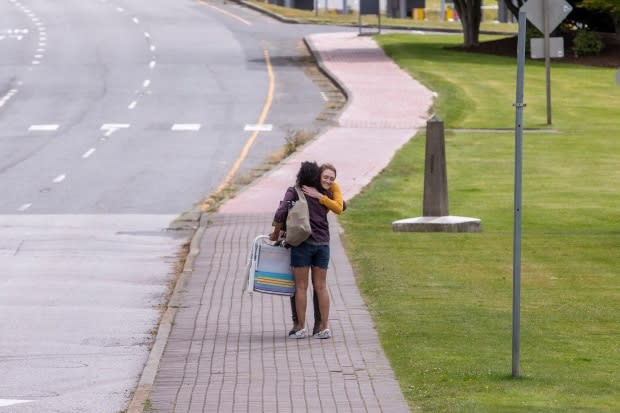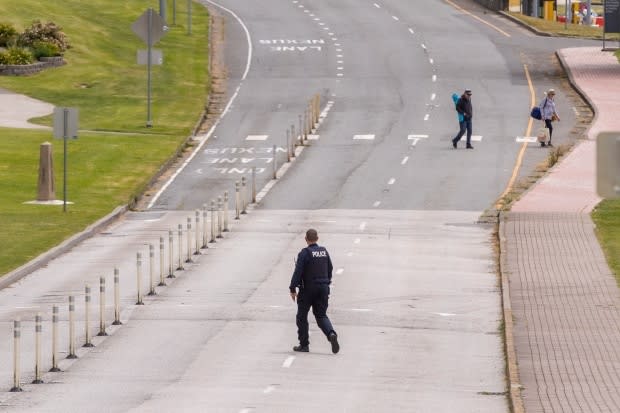Cross-border mingling near Peace Arch still a walk in the park, says lawyer from Washington state
Canadians continue to visit the American side of Peace Arch Historical State Park south of Metro Vancouver despite the closure of the Canadian side of the border park to control the spread of coronavirus.
Engaged couple Kaelyn Ball of South Surrey and David Hogsten of Baltimore, Md., are one such couple using the Canada Day and U.S. Independence Day holidays for a rendezvous. Neither Ball or Hogsten can afford to take 14 days off from work to quarantine, so flying to either location wasn't an option.
"It's great that we can have this area where we can both meet," said Hogsten, who flew to Seattle and drove up to the U.S. side of the park to meet his fiancée.
B.C.'s Peace Arch Provincial Park was shut on June 18 after crowds of people gathered in the green space straddling the 49th parallel, but the U.S. side of the park remains open.
And Washington State immigration lawyer Len Saunders says there's little Canadian officials can do to stop the foot traffic due to a treaty signed in 1814.
Saunders, based in Blaine., Wash., said he recently met clients in the state park and watched dozens of people jumping a shallow ditch along 0 Avenue in South Surrey, B.C., to picnic, walk dogs or to enjoy what appeared to be reunions of families and friends.

Anna Gill, communications director for Washington State Parks and Recreation Commission, says rangers are "working with the U.S. Border Patrol to monitor the situation" in the area immediately east of the Peace Arch border crossing.
Visitors are asked to follow rules put in place to limit transmission of COVID-19 including staying six feet or two metres apart if they're not in the same household, according the the park's website. People who don't do so are expected to quarantine for 14 days when they return to Canada, but it's not known if visitors are complying.
As for who's responsible, the RCMP, for instance, say the park is governed by Washington State.
Canada Border Services Agency confirmed it's taking no action when it comes to Canadians crossing into the American side of the park because CBSA is not responsible for the park.
"The Peace Arch Provincial Park is not a designated port of entry and as such, the CBSA is not responsible for oversight in the Park," the CBSA said in an emailed statement to CBC.
Saunders said the province of B.C. "kind of has their hands tied" given the legal underpinnings of the park enshrined in 1814 in the Treaty of Ghent, a settlement after the War of 1812 between U.S. and England. The park allows citizens of both the U.S. and Canada to mingle without technically crossing any border. It was meant as an enduring symbol of the sibling-like relationship between the two countries.
Saunders said the treaty stipulates there could not be any boundaries or physical barriers erected on the northern border of the U.S. — and if either side violated that treaty — the boundaries revert back to pre-treaty.

U.S. can claim parts of Southern Ontario if park is blocked
"So if the Canadian government decides that they want to cut off the Peace Arch park from Canadians entering from Zero Avenue by putting up a physical barrier, then technically the United States can claim back part of Southern Ontario and Quebec, under this treaty which would be broken," he said.
And if the Americans violate the treaty? Canada gets back parts of Maine, Michigan and Wisconsin.
"As long as you stay on the grass, you've got 20 acres [eight hectares] there to meet family, to walk your dog, to ride your bike, to do whatever you want, and then return to Canada. Legally. Because you haven't really entered the United States," said Saunders.
Ball and Hogsten, who both live alone and have purposely kept their social bubbles small for this meeting, are grateful that the park has allowed a reunion after four long months.
"There are worse places to be stuck than in a park," said Hogsten.


